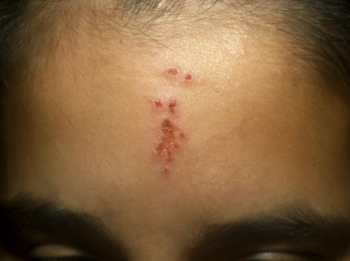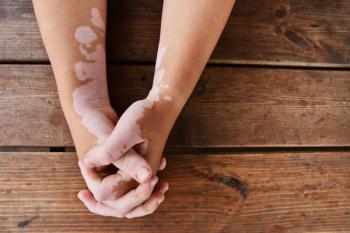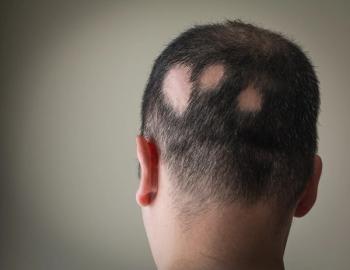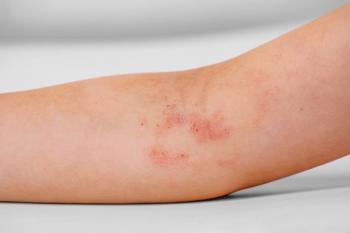
- Consultant for Pediatricians Vol 9 No 6
- Volume 9
- Issue 6
Tips for Identifying and Treating Nail Disorders
Disorders of children’s fingernails and toenails can often be difficult to diagnose or treat. Here I provide tips on identifying and treating some of the nail disorders seen in pediatric practice.
Disorders of children's fingernails and toenails can often be difficult to diagnose or treat. Here I provide tips on identifying and treating some of the nail disorders seen in pediatric practice.
Onychomycosis
This is one of the more common problems in children's nails that parents express concern about. Toenails are affected far more often than fingernails; coexistent tinea pedis may be present. A number of different patterns of onychomycosis are recognized; the causative organisms and the recommended treatments vary depending on the pattern. Although most cases of onychomycosis are caused by Trichophyton rubrum, Trichophyton mentagrophytes and Epidermophyton floccosum have also been implicated.
The most common type is distal subungual onychomycosis, which involves the distal portion of the nail plate. Subungual onychomycosis produces the classic physical findings of thickening and yellow discoloration of the nail plate, along with subungual debris.
Proximal subungual onychomycosis involves mainly the proximal portion of the nail and raises the possibility of HIV infection. A more superficial pattern, involving white plaques on the nail plate, is known as white superficial onychomycosis.
Diagnosis of onychomycosis can be made via potassium hydroxide (KOH) preparation; sampling of the subungual debris yields the highest results. Fungal culture is also an option, but it can take a month or so to get results. An alternative approach is pathological staining for hyphae in the nail plate; results are often more sensitive and more timely than either KOH preparation or culture.
Treatment with topical antifungal medications is often unsatisfactory because in most cases the fungus resides beneath the nail and the nail plate prevents penetration of the medication. A topical preparation of ciclopirox solution 8% is available as a nail lacquer and has a role in the treatment of more superficial infections, although its use is often limited by its expense.
The oral antifungal of choice is terbinafine, which is given for 6 weeks for onychomycosis involving the fingernails and for 12 weeks for infections involving the toenails. Liver function should be assessed at baseline and after 6 weeks of treatment. Improvement is defined as normal-appearing nail proximally, as in the photograph above.
Paronychia
Inflammation of the skin surrounding the nail can be either acute or chronic. Acute paronychia is most commonly caused by Staphylococcus aureus and manifests clinically as painful erythema, at times accompanied by purulent discharge. Topical antibacterial ointments (eg, mupirocin) are generally sufficient for treatment.
Chronic paronychia is defined as paronychia that lasts 6 weeks or longer. Among adults, it is more likely to occur in those who chronically have their hands in water; in the pediatric population, it is usually caused by thumb-sucking. Clinically, affected patients have erythema of the periungual skin and nail changes; these findings are usually not accompanied by the pain and discharge seen in the acute form. The organism most commonly associated with chronic paronychia is Candida albicans. Treatment should target both the yeast and the chronic inflammation. A regimen of ketaconazole 2% cream every morning, along with a class 1 or 2 topical corticosteroid in the evening for 1 to 2 weeks is very helpful. To prevent recurrence, it is important that patients keep their hands dry.
Self-induced nail changes
Occasionally nail changes can be self-induced. A habit-tic deformity results from manipulation of one nail, usually the thumb, with another nail. The deformity appears as multiple central ridges in the affected nail. Self-induced nail changes improve when the causative behavior is stopped.
Melanonychia
Pigmentary changes of the nail can be distressing to both patients and providers. Linear pigmentation of the nail (
Although clinical monitoring of patients with melanonychia is an option, I feel that a careful nail matrix biopsy with histological evaluation is warranted in each of these patients to determine whether the pigment is benign or malignant. Punch biopsy should be performed in the most proximal portion of the pigment; this may require reflection of the proximal nail fold and is thus best done by either a hand or dermatological surgeon with experience doing nail biopsies.
Trauma is another cause of subungual pigmentary change, but this can usually be easily diagnosed from a history of trauma to the affected area. Also, the pigment is generally confined to the area of trauma (
Onycholysis
Among the many possible causes of separation of the nail plate from the nail bed, medications, trauma, and underlying medical conditions are the most common. In children, the most commonly implicated medications are those of the tetracycline class used in the treatment of acne. Discontinuing the culprit medication is the treatment of choice.
Congenital nail disorders
One of the most common congenital nail disorders is congenital malalignment of the great toenails (
Other congenital nail disorders include pachyonychia congenita and nail-patella syndrome. Pachyonychia congenita is an autosomal dominant condition that results in massive amounts of subungual debris, which gives the nails a very thickened appearance. Nail-patella syndrome may manifest with micronychia and triangular lunulae.
Articles in this issue
over 15 years ago
Atypical Dermatitis Herpetiformisover 15 years ago
Extensive Miliaria Crystallinaover 15 years ago
Developing Pattern Recognition: The Key to Pediatric Dermatologyover 15 years ago
Drug Eruptions: The Benign-and the Life-Threateningover 15 years ago
Black-Spot Poison Ivyover 15 years ago
Can You Distinguish Among These Diaper Dermatoses?over 15 years ago
Unexplained Bruising: Weighing the Pros and Cons of Possible Causesover 15 years ago
Is this a dermatophyte infection of the scalp?Newsletter
Access practical, evidence-based guidance to support better care for our youngest patients. Join our email list for the latest clinical updates.














